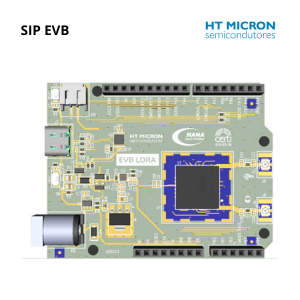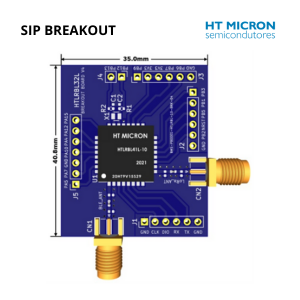IoT represents the fourth-generation technology that facilitates the connection and transformation of products into smart, intelligent and communicative entities. IoT has already established its footprint in various business verticals such as medical, heath care, automobile, and industrial applications. IoT empowers the collection, analysis, and transmission of information across various networks, encompassing both server and edge devices. This information can then undergo further processing and distribution to multiple inter-connected devices through cloud connectivity.
IoT Application in Oil & Gas Industry:
IoT is used in the Oil and Gas Industry for two basic reasons: First - low power design, a fundamental requirement for intrinsically safe products, Second - two-way wireless communication. These two advantages are a boon for the products used in Oil and Gas industries. The only challenge is for the product design to meet the hazardous location certification.
An intrinsic safe certification is mandatory for any device placed in hazardous locations. The certification code depends on the type of protection, zone, and the region where the product shall be installed.
In the North American and Canadian markets, the area classification is done in three classes:
Class I: Location where flammable gases and vapors are present.
Class II: Location where combustible dust is present.
Class III: Location where flying is present.
The hazardous area is further divided into two divisions, based upon the probability that a dangerous fuel to air mixture will occur or not.
Dvision-1: Location is where there is a high probability (by underwriting standards) that an explosive concentration of gas or vapor is present during normal operation of the plant.
Division-2: Location is where there is a very low probability that the flammable material is present in the explosive concentration during normal operation of the plant; so, an explosive concentration is expected only in case of a failure of the plant containment system.
The GROUP is also one of the meaningful nomenclatures of the hazardous area terms.
The four gas groups were created so that electrical equipment intended to be used in hazardous (classified) locations could be rated for families of gases and vapors and tested with a designated worst-case gas/air mixture to cover the entire group.
The temperature class definitions are used to designate the maximum operating temperatures on the surface of the equipment, which should not exceed the ignition temperature of the surrounding atmosphere.
Areas classified per NEC Article 505 are divided into three zones based on the probability of an ignitable concentration being present, rather than into two divisions as per NEC article 501. Areas that would be classified division 1 are further divided into zone 0 and zone 1. A zone 0 area is more likely to contain an ignitable atmosphere than zone 1 area. Division 2 and zone 2 areas are essentially equivalent.
Zone-0: Presence of ignitable concentration of combustible gases and vapors continuously, or for long periods of time.
Zone-1: Intermittent hazard may be present.
Zone-2: Hazard will be present under abnormal conditions.
IoT-based products can be designed for various applications, a few of them are listed below:
- Temperature Sensor
- Pressure Monitoring
- Gas Monitoring
- Flow Monitoring
A typical block diagram of the IoT application is shown below:
Figure 1: IOT Block Diagram

An IoT product might consist of a battery as a power source or can be powered externally from either 9V ~ 36V DC supply available in the process control applications or 110/230Vac input.
The microcontroller can be selected based on the applications, power consumption, and the peripheral requirements. The microcontroller converts the analog signal to digital and based on the configuration can send the data on wired/wireless to the remote station. Analog signal conditioning stands as a pivotal component of the product, bridging the connection between the sensor and facilitating the conversion of analog signals for compatibility with the microcontroller. The Bluetooth interface suggested in the example is due to its wide acceptance and low power consumption. The wireless interface depends on the end-application of the product.
Electronics Design Consideration
The electronics design of an IoT product for a hazardous location is very complex and needs a careful selection of the architecture and base components as compared to the IoT developed for commercial applications. In case the IoT is for a hazardous location, the product must be intrinsically safe and should not cause an explosion under fault conditions. The product architecture should be designed considering various mechanical, and electronics requirements as defined in the IEC 60079 standards, certification requirements and the functional specifications.
Power Source: This is one of the main elements in an IoT-based product. Battery selection should meet the overall power budget of the product, followed by the battery lifetime. In case of intrinsic safety, special consideration is required for where the battery in charged. IEC 60079-11 clause 7.4 provide details for the type of battery and its construction details. Separation distance from the battery and electrical interface should be done as per Table-5 of IEC 60079-11. If the battery is used in the compartment, sufficient ventilation must be provided to ensure that no dangerous gas accumulation occurs during discharge or inactivity periods. In scenarios where IoT operates on DC power sources such as 9~36Vdc (nominal 24Vdc), the selection of power supply barrier protection becomes a critical consideration, particularly when catering to intrinsic safety norms. This necessitates a thorough analysis of the product’s prerequisites and the mandatory certifications. Adding to the complexity is the existence of IoT devices functioning on 230Vac, demands intrinsic safe calculations and certifications aligned with Um = 250V.
Microcontroller: Its central processing unit of the IoT product. The architecture of the microcontroller, power, and clock frequency processing must be carefully selected for a particular application. The Analog to Digital Conversion (ADC) part of the microcontroller should be selected based on the required accuracy, update rate, and resolution. Microcontroller should have enough sleep modes so that the power is optimally utilized for IoT applications and should have sufficient memory/peripheral interface to meet the product specifications.
Analog Signal Conditioning: The front-end block should meet the intrinsic safe requirements as per the IEC 60079 standards and should also protect the product from EMI-EMC testing. Barrier circuit should provide enough isolation for meeting the spark-gap ignition requirements and impedance requirement of the transducer. Also, along with the safety requirements, the designer should ensure that extracted sensor signal is not degraded from the excessive noise present in outside environment. All the sensors used for collecting data from the process parameters to the signal conditioning block must be certified for the particular zone.
Wireless Communications: There are various wireless options available for sending data from the IoT product to the sensor such as (6LOWPAN, ZigBEE, ZWave, Bluetooth, Wi-Fi, Wireless HART). Selection of a particular wireless interface requires knowledge of end application, RF-power, antenna, and protocol. Selection of the interface for a particular IoT application should be done keeping these basic things in mind:
- The amount of data to be shared to the server.
- RF power.
- Power consumed for each bit of data transferred.
- Update rate of the data and distance of communication.
- Security of data.
In case of intrinsic safe applications, it’s important to note that the use of certified modules does not directly confer suitability for deployment in hazardous locations. The product must undergo fresh testing within an intrinsic safe lab to assess both quantifiable and non-quantifiable ffaults, along with spark testing. or the countable and non-countable faults and spark testing. The RF power transmitted from the devices should be limited as per Table-1x of IEC 60079-0.
Conclusion
When building IoT solutions for hazardous locations, special conditions relating to creepage and clearance, encapsulation, and separation distance must be carefully considered. Also, when battery and RF signals are used, it’s expected the designer should be aware of the applicable standards and limitation of these standards for such products.
With more than 25 years of experience in designing mission-critical and consumer-grade embedded hardware designs, eInfochips is well poised to make products which are smaller, faster, reliable, efficient, intelligent and economical. We have worked on developing complex embedded control systems for avionics and industrial solutions. At the same time, we have also developed portable and power efficient systems for wearables, medical devices, home automation and surveillance solutions.
eInfochips, as an Arrow company, has a strong ecosystem of manufacturing partners who can help right from electronic prototype design, manufacturing, production, and certification. eInfochips works closely with the contract manufacturers to make sure that the designs are optimized for testing (DFT) and manufacturing (DFM) to reduce design alterations on production transfer. To know more about this contact us.
References
- "IEC 60079–0" in Explosive Atmospheres - Part 0: General Requirements, Geneva. Switzerland.
- "IEC 60079–11 Part 11" in Equipment Protection by Intrinsic Safety “i”, Geneva, Switzerland.
- "UL 2225" in Standard for Safety; Cables and Cable Fittings for Use In Hazardous (Classified) Locations, Northbrook. IL:UL.
- "CSA C22.1–18 Rule 18–092" in Canadian Electrical Code Part I, Toronto, Canada:CSA Group.
- "NFPA 70" in National Electrical Code, Quincy, MA: National Fire Protection Association.
- "CAN/CSA C22.2 No.60079–0" in Explosive Atmospheres - Part 0: General Requirements, Toronto, Canada:CSA Group.
About Authors:
Kartik Gandhi, currently serving in the capacity of Senior Director of Engineering, possesses a distinguished career spanning over two decades, marked by a profound expertise in fields including Business Analysis, Presales, and Embedded Systems. Throughout his professional journey, Mr. kartik has demonstrated his proficiency across diverse platforms, notably Qualcomm and NXP, and has contributed his talents to several esteemed product-based organizations.
Dr. Suraj Pardeshi has more than 20 years of experience in Research & Development, Product Design & Development, and testing. He has worked on various IoT-enabled platforms for Industrial applications. He has more than 15 publications in various National and International journals. He holds two Indian patents, Gold Medalist and Ph.D (Electrical) from M.S University, Vadodara.




